Proxima b — Earth’s twin or another uninhabitable exoplanet?
27th Mar 2023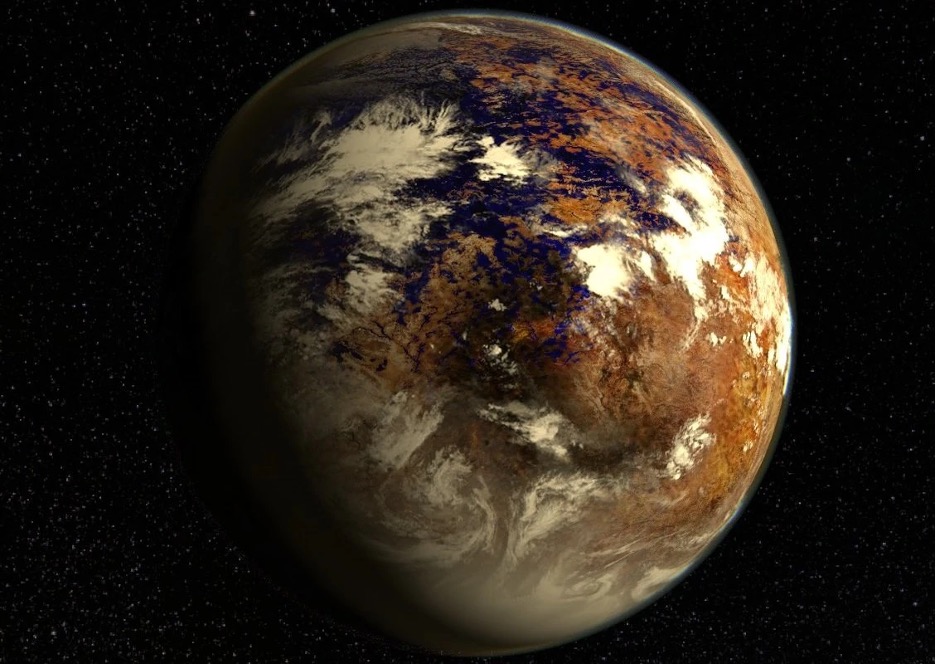
Scientists learned about the existence of exoplanets 30 years ago. Since then, more than 5,000 planets have been found outside the solar system, but Proxima b is of particular interest. Let’s find out why.
Proxima b discovery
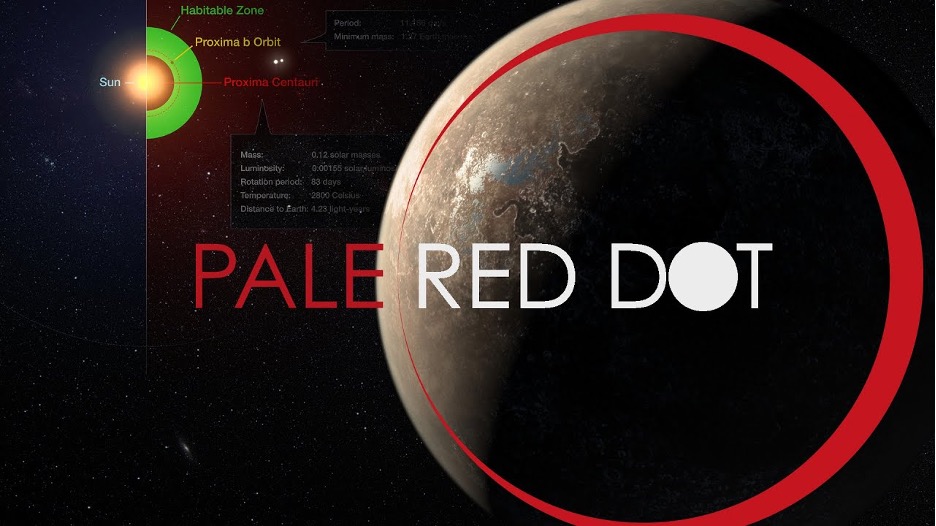
Proxima b planet was discovered on August 24, 2016, although scientists posited the presence of planets in the star closest to the Sun, Proxima Centauri, in 2013. At that time, a group of scientists led by Mikko Tuomi studied research archives on the red dwarf, obtained using the HARPS and UVES spectrographs, and suggested that there could be four planets in the Proxima Centauri system.
To confirm the hypothesis, the European Southern Observatory (ESO) launched the Pale Red Dot campaign. The research team was led by the Spanish astronomer Guillem Anglada-Escude. The Doppler method, also referred to as the radial velocity method, was used in the search for planets.
Usually, a star affects its planets, but scientists have noticed that gravity associated with Proxima Centauri b changes the behaviour of its star, slightly shifting the radial velocity as if swinging it. Anglada-Escude continuously recorded these fluctuations for two months, using the HARPS spectrograph at the ESO La Silla 3.6m telescope at the same time of the day, along with other ground-based telescopes worldwide. The analysis of the obtained data made it possible to announce the discovery of a new planet.
In 2020, scientists at the European Southern Observatory began using the new, more advanced ESPRESSO spectrograph, which not only confirmed the existence of an Earth-like planet but also obtained more accurate data on the location of Proxima b, its mass and the duration of its revolution around the star.
So, what do we know about our neighbour in space?
What is Proxima b?
Proxima Centauri b is an exoplanet that orbits the red dwarf Proxima Centauri, the closest star to our Sun. Its radius is 1.1 times the radius of the Earth, and its mass is about 17% larger; that is, this exoplanet’s parameters are very close to those of the Earth.
Scientists have calculated how far away Proxima b is — 4.22 light years or 40 trillion km. By cosmic standards, it is not that far, but still unattainable for us as of yet.
More interesting Proxima b facts include:
- Age of around 4.85 billion years.
- It completes an orbit around its star in 11.2 Earth days.
- 20 times closer to its star than the Earth is to the Sun (7.5 million km).
Can humans survive on Proxima b?
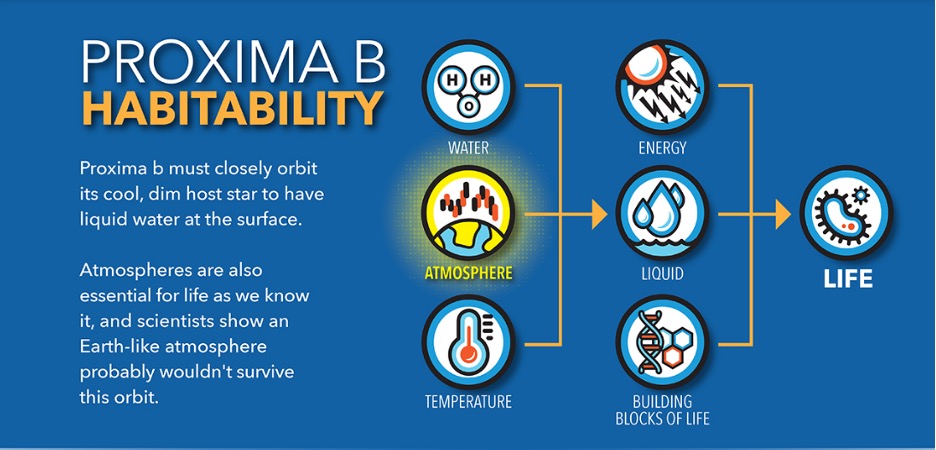
Of all the exoplanets discovered to date, Proxima b is the most likely candidate for the existence of life. But this does not mean it will be able to sustain human life. Scholars’ opinions on this subject are divided. Let’s try to draw our own conclusions based on the information available.
What is Proxima Centauri b surface?
Due to the almost identical mass, it is assumed that Proxima b, like the Earth, is not gaseous but rocky. Its surface may be 90% rocks, soil, various solid formations, and 10% oceans. Scientists have compiled a model of the planet’s climate using the unified model of the Meteorological Bureau and visualized it. See how it came to be.
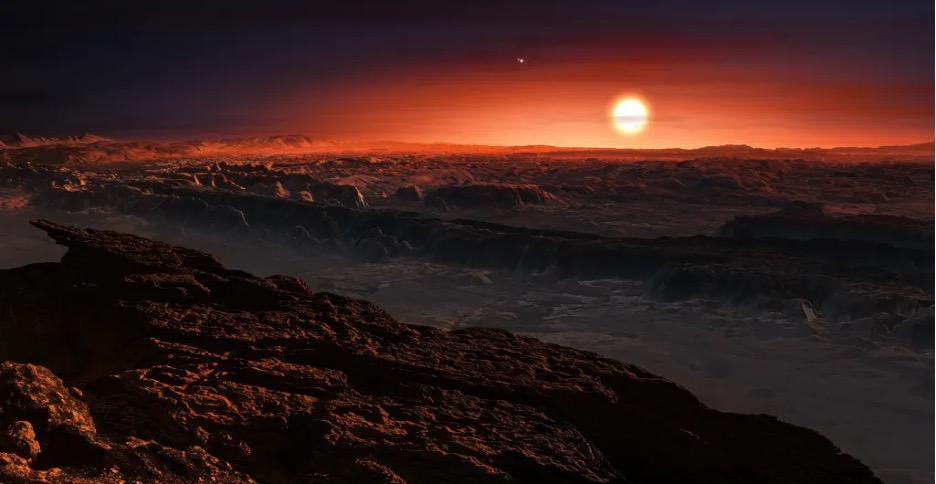
The model also assumes that the Proxima b equilibrium temperature is only half that of Earth (-40 °C vs -18 °C). But due to its close location to the parent star and the influence of tidal forces, the planet is most likely constantly turned to its star by the same side, so the “day” hemisphere can warm up to a comfortable 30 °C, but the “night” hemisphere can keep significant cold, up to – 130 °C (which is almost twice as cold as Antarctica in winter).
Does Proxima b have oxygen?
Scientists do not have an answer to this question yet. The Earth’s atmosphere contains various gases, including oxygen, which is involved in the chemical processes that form energy, which is one of the key signs of habitability. Thanks to this energy, living organisms grow, move and multiply. Besides, the atmosphere protects the Earth from harmful radiation, cold, and various celestial bodies’ impact.
Proxima Centauri produces 400 times more flares than the Sun. As a result, the planet is subject to 2,000+ times more stellar wind pressure than the Earth experiences from its solar wind. This radiation and stellar winds would have “blown away” any atmosphere long ago. So what’s the most likely answer? That you can forget about oxygen on Proxima b.
Is there water on Proxima b
The planet is in a habitable zone, which should ensure the existence of water on it in liquid form. Due to the weak luminosity of the parent star, the planet receives about 65% of the light that the Earth receives from the Sun, this amount of heat should be enough to keep the water on its surface from freezing into eternal ice.
At the same time, it is possible that due to strong doses of radiation, water can quickly evaporate. If so, this is another strong argument in favour of the hypothesis, why is Proxima b not habitable.
Are there Proxima b aliens?
There is an opinion among scientists that oxygen is not needed for the development of some life forms. Life existed for more than a billion years in an environment of CO2, and only then did oxygen appear in the atmosphere. So is Proxima Centauri b habitable? It is quite possible, but life there would manifest in forms different from those on Earth. Humans would certainly have a rough time there.
Is Proxima Centauri a threat to Earth?
This would only be possible if the star went supernova. Any supernova within 30 light-years of Earth has the potential to cause a mass extinction, and at a distance of 4.2 light-years, it can easily destroy all life forms on Earth with gamma rays and charged particles. But physics, as we know it, says that Proxima Centauri is too small for the formation of a supernova, so it cannot threaten the Earth in any way.
It is easier to assume that if there is intelligent life on Proxima b, then its representatives could someday visit the Earth with hostile intentions, but this scenario is still nothing more than a plot for a space movie.
How long would it take to get to Proxima b?
We are separated from the exoplanet by about 40 trillion kilometres. Voyager would take 75,000 years for such a journey, and the fastest unmanned spacecraft, Helios 2, which reaches speeds of up to 253,000 km/h, would require 18,000 years. But the problem is that the ship’s life cycle is designed for a maximum of 50 years, and we do not have any other technical capabilities yet.
Can we go to Proxima b, and why do we need to?
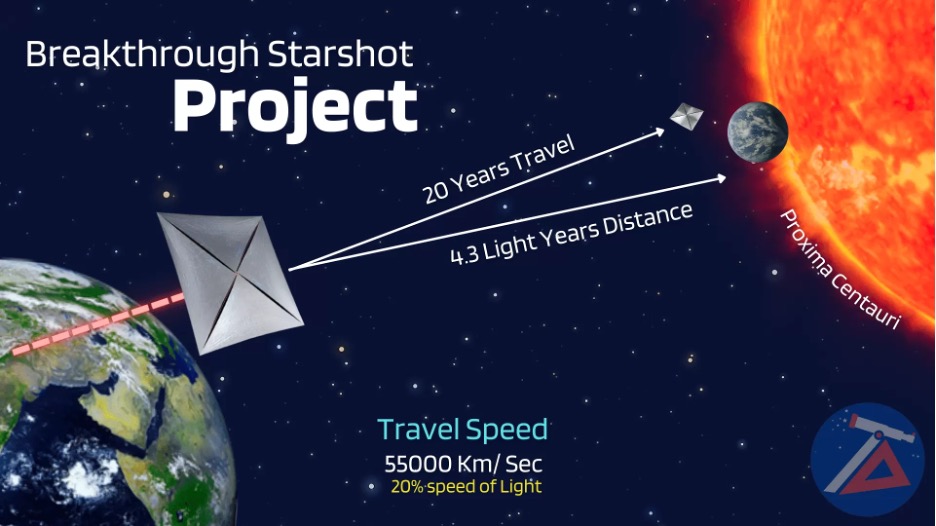
In 2016, Mark Zuckerberg, Yuri Milner, and Stephen Hawking founded the Breakthrough Starshot program, the goal of which is to develop a nano-probe “StarShips” that can successfully reach the Proxima Centauri star in 20 years to search for signs of life and produce results. The inspiring work has scientists and investors so captivated that the expedition may become possible as soon as 2036.
Is the game worth the candle? Sceptics will usually say no. But did they prevent Columbus from discovering America, Amundsen from discovering the South Pole, and the Americans from landing on the moon? Humanity will always strive for new discoveries, as it is in our nature.
Final thoughts
The discovery of Proxima b changed our idea of the universe. The existence of an exoplanet in a habitable zone with parameters similar to Earth’s, possibly liquid water, gives hope for the discovery of life in space.
Of course, it will take more than a dozen years until the research probe lands on Proxima b. But when this happens, we might witness an epoch-making event — a meeting with an alien civilization.


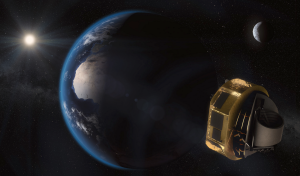
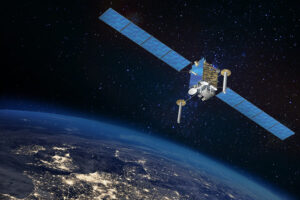


Thank you for your comment! It will be visible on the site after moderation.